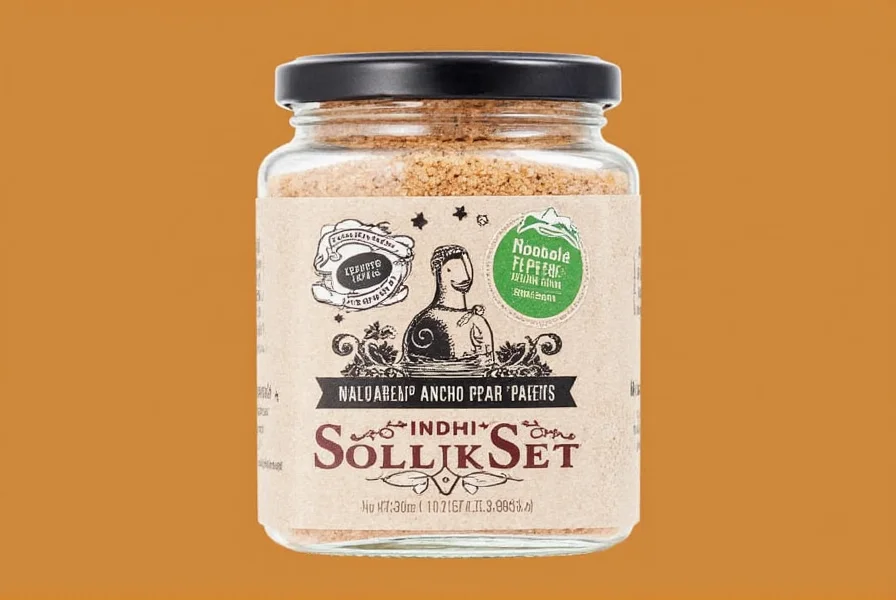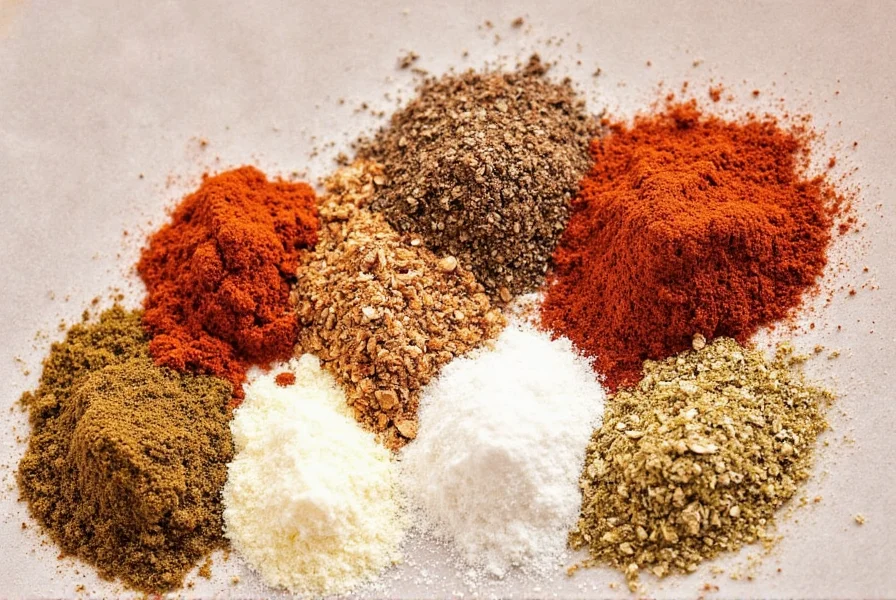
Top 5 Ancho Pepper Substitutes You Can Use Today
Looking for ancho pepper substitutes? Here are the top 5 alternatives that deliver perfect flavor for sauces, moles, and stews with detailed usage tips:
- Guajillo Peppers – Best for salsas and adobos with tangy notes
- Pasilla Peppers – Deep, earthy flavor for braises and moles
- Mulato Peppers – Chocolatey sweetness for fancy moles
- Roasted Poblano – Fresh alternative for stuffed dishes
- Smoked Paprika – Quick fix for dry rubs and soups
Understanding Ancho Pepper Flavor Profile
Before diving into substitutions, here's what makes ancho peppers special:
- Heat Level: Mild to moderate (1,000–2,000 SHU)
- Flavor Notes: Sweet, smoky, raisin-like, with hints of cocoa
- Texture: Dried, leathery, perfect for grinding or rehydrating
- Common Uses: Sauces, moles, soups, stews, marinades
| Pepper Type | Heat Level | Flavor Profile | Best For |
|---|---|---|---|
| Ancho | Mild to Moderate | Sweet, Smoky, Fruity, Earthy | Moles, Sauces, Stews |
Top 5 Ancho Pepper Substitutes Explained
1. Guajillo Peppers
Guajillo peppers are the top choice for most recipes. These thin, reddish-brown peppers offer similar mild heat with bright, tangy flavor notes of green tea and cranberry.
- SHU: ~2,500–5,000
- Flavor: Tangy, slightly fruity, mildly smoky
- Use When: Making salsas, adobos, or sauces where you want acidity
Tip: Soak in warm water for 20 minutes before blending for smoother results.
2. Pasilla Peppers
Pasilla peppers (chile negro) provide deep, earthy flavors with dark fruit and licorice notes. They're perfect for slow-cooked dishes needing complexity.
- SHU: ~1,000–2,500
- Flavor: Dark fruit, licorice, dried herbs
- Use When: Simmering sauces, braises, or anything needing depth
3. Mulato Peppers
Closer to anchos than most realize, mulatos have sweet, chocolatey undertones. They're ideal for rich moles and desserts with spice.
- SHU: ~2,500–3,000
- Flavor: Chocolate, coffee, caramelized sugar
- Use When: Making moles or desserts with spice
4. Poblano Peppers (Fresh or Roasted)
Yes, fresh poblanos are the source of dried anchos. Roast and peel them for a good substitute, though they'll lack dried depth without drying.
- SHU: ~1,000–2,000
- Flavor: Grassier when fresh, smoky when roasted
- Use When: Stuffing, roasting, or adding moisture to sauces
5. Paprika (Especially Smoked Spanish Paprika)
When in a bind, smoked paprika mimics ancho's earthy sweetness. It won't replicate texture but saves flavor profiles.
- SHU: Varies (sweet: ~0, smoked: ~100–1,000)
- Flavor: Sweet, smoky, woodsy
- Use When: Seasoning rubs, soups, or meat dishes
Buying Guide: Choosing the Right Ancho Pepper Substitute
Here's how to pick the best substitute based on your needs:
Key Considerations
- Flavor Match: Prioritize smokiness, sweetness, and earthiness for your recipe.
- Heat Tolerance: Know your audience's spice preference.
- Availability: Grocery store vs. specialty shop options.
- Texture: Blending, sprinkling, or stuffing requirements.
| Substitute | Budget-Friendly | Easily Available | Smoky Flavor | Best Use Case |
|---|---|---|---|---|
| Guajillo | Yes | Yes | Moderate | Sauces, Salsas |
| Pasilla | Maybe | Sometimes | Moderate-High | Braises, Mole |
| Mulato | No | Rare | High | Fancy Moles, Desserts |
| Poblano | Yes | Yes | Only when roasted | Stuffed dishes, Fresh recipes |
| Smoked Paprika | Yes | Yes | Very High | Dry rubs, Soups |
How to Use These Substitutes Like a Pro
For Sauces & Mole
- Best Picks: Guajillo, Pasilla, Mulato
- Pro Tip: Rehydrate dried peppers in hot water or broth for 20–30 minutes before blending. Strain and discard soaking liquid unless it adds color or flavor.
For Stews & Braises
- Best Picks: Pasilla, Guajillo
- Pro Tip: Add alongside aromatics like onions and garlic for deeper infusion.
For Rubs & Dry Spice Mixes
- Best Picks: Smoked Paprika
- Pro Tip: Combine with cumin, coriander, and brown sugar for a balanced BBQ-style rub.
For Fresh Dishes (e.g., Salads, Grilled Veggies)
- Best Pick: Roasted Poblano
- Pro Tip: Char over flame or under broiler until skin blisters, then steam and peel for smooth texture.
Frequently Asked Questions About Ancho Pepper Substitutes
Here are answers to common questions about replacing ancho peppers:
What's the closest substitute for ancho peppers?
Guajillo peppers are the closest substitute, offering similar mild heat (2,500-5,000 SHU) with tangy, fruity notes. Smoked paprika provides the smoky-sweet profile when anchos are unavailable.
How much substitute should I use for each ancho pepper?
One dried ancho pepper equals approximately 1 teaspoon ground ancho powder, 1 tablespoon rehydrated pureed pepper, or 1-2 teaspoons smoked paprika. Use 1:1 ratio for dried guajillo/pasilla peppers. Adjust to taste.
Can I use regular paprika instead of ancho peppers?
Regular sweet paprika lacks ancho's depth. Use smoked Spanish paprika (pimentón) for better results. Use half the amount of smoked paprika compared to ancho peppers, then adjust to taste.
What's the difference between ancho and guajillo peppers?
Ancho peppers (dried poblanos) are heart-shaped with deep red color, offering sweet, smoky, raisin-like flavors. Guajillo peppers are thinner and oval-shaped with brighter red color, providing tangier notes with cranberry and green tea hints. Guajillos are slightly hotter but excellent substitutes.
Can I substitute fresh poblanos for dried ancho peppers?
Yes! Anchos are dried poblanos. Roast fresh poblanos until skin blisters, then steam and peel. Use 2-3 fresh poblanos per dried ancho, and add smoked paprika for depth.
Are there non-chili alternatives for ancho pepper flavor?
If avoiding chili peppers, combine smoked paprika (smokiness), cocoa powder (earthiness), and raisin/date paste (sweetness). This won't perfectly replicate ancho but works for moles or stews.

Quick Recap: Your Substitute Cheat Sheet
- Closest match: Guajillo
- Most versatile: Smoked Paprika
- Deep flavor: Pasilla or Mulato
- Easy alternative: Roasted Poblano










 浙公网安备
33010002000092号
浙公网安备
33010002000092号 浙B2-20120091-4
浙B2-20120091-4